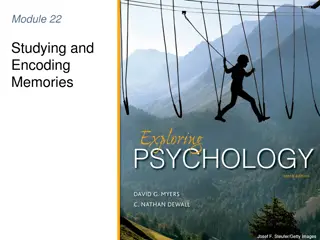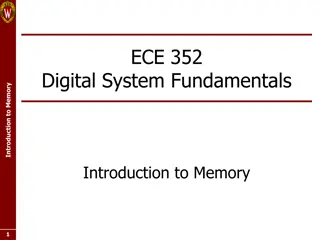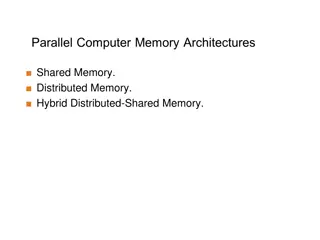Evaluating Bartlett's 1932 Theory of Reconstructive Memory
In this task, you will evaluate Bartlett's theory of reconstructive memory by examining its claims regarding the influence of schemas, deliberate distortion of memories, and the accuracy of memory under the impact of schemas. Through a structured analysis, you will assess each claim, present evidence, address criticisms, and draw well-supported conclusions, culminating in an overall judgment of the theory.
Download Presentation

Please find below an Image/Link to download the presentation.
The content on the website is provided AS IS for your information and personal use only. It may not be sold, licensed, or shared on other websites without obtaining consent from the author.If you encounter any issues during the download, it is possible that the publisher has removed the file from their server.
You are allowed to download the files provided on this website for personal or commercial use, subject to the condition that they are used lawfully. All files are the property of their respective owners.
The content on the website is provided AS IS for your information and personal use only. It may not be sold, licensed, or shared on other websites without obtaining consent from the author.
E N D
Presentation Transcript
Retrieval practice Socrative quiz on studies of reconstructive memory psychlotron.org.uk
Evaluating theories We look at the CLAIMS made by the theory. We decide whether the claims should be accepted or rejected and for what REASONS. We use EVIDENCE to support our REASONS. We acknowledge CRITICISMS of the evidence. We draw our CONCLUSIONS about each claim. We draw our CONCLUSIONS about the theory as a whole. psychlotron.org.uk
Evaluate Bartletts (1932) theory of reconstructive memory (12 marks) Claims: 1. Memories are affected by schemas. 2. Memories can deliberately be distorted by manipulating people s schemas. 3. The effect of schemas is always to make memory less accurate. In your groups, work up an evaluation of each of these claims. psychlotron.org.uk
Plan your writing Your overall judgement A brief outline of the theory A paragraph evaluating each claim A conclusion reiterating your overall judgement psychlotron.org.uk
12 marks = 18 minutes writing psychlotron.org.uk























